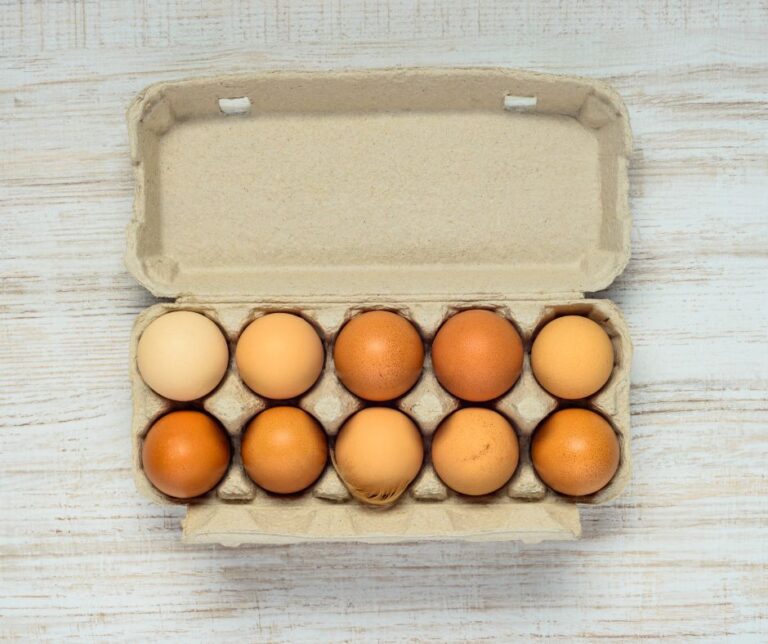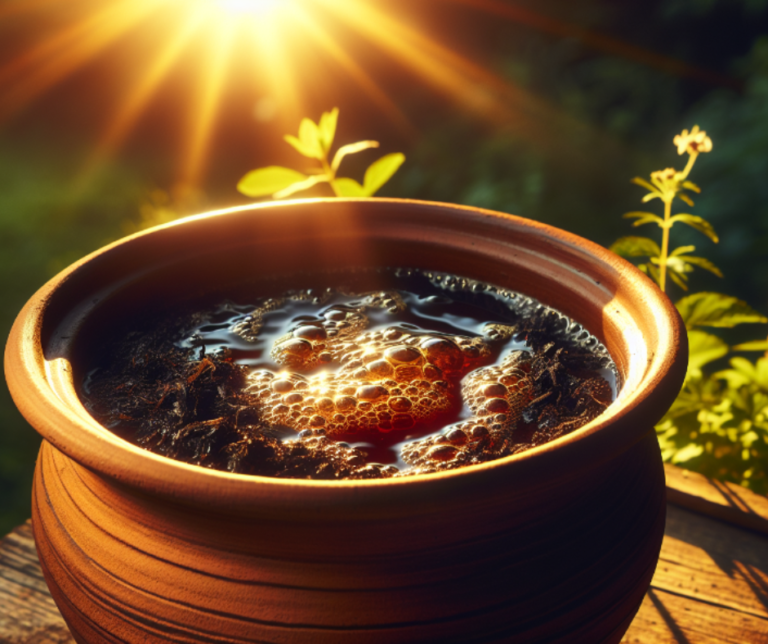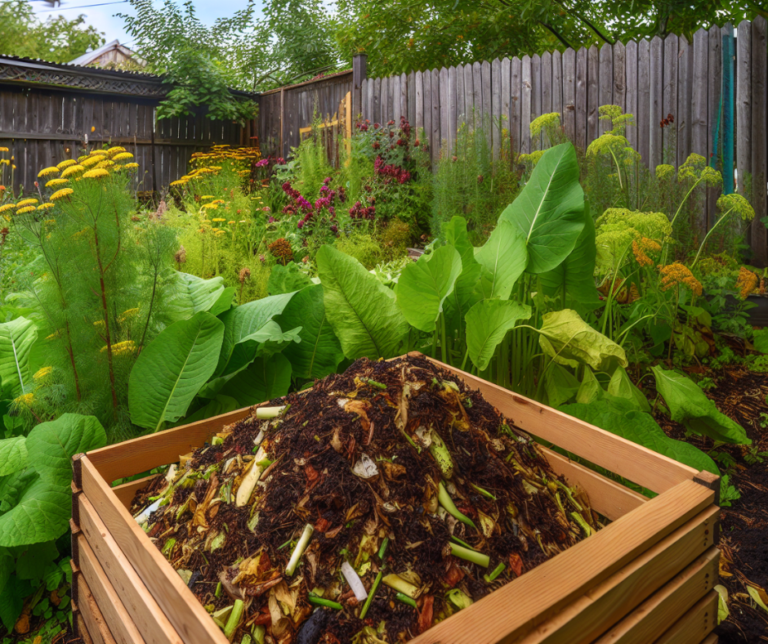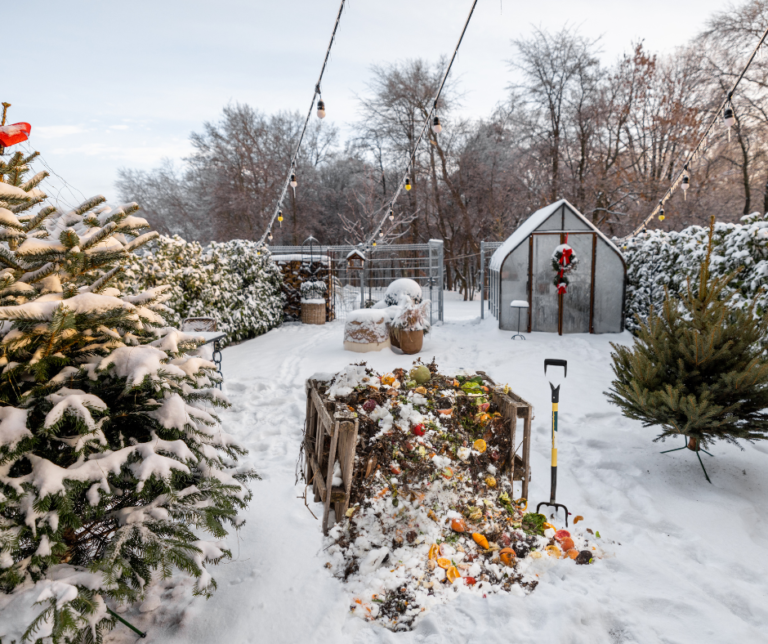Cracking the Mystery: Are Pistachio Shells Really Compostable?
Picture this: you’re sitting in your backyard, surrounded by lush green plants and vibrant flowers, basking in the warmth of the sun. You take a deep breath and smell the earthy scent of freshly made compost. But here’s the twist – the key ingredient in this magical mixture is something unexpected and often overlooked: pistachio shells. Yes, you heard that right! In this article, we’ll explore the wonders of using the unmissable pistachio shells for composting in your garden, taking your green thumb skills to a whole new level. Let’s dive in and uncover the secrets of the pistachio shells compost!
Understanding Compost

Embarking on the composting journey opens doors to sustainable gardening wonders, where the practice of utilizing pistachio shells for compost takes center stage. Before delving into the unique qualities of pistachio shells, grasp the fundamentals of composting – transforming organic matter into nutrient-rich soil. Dive into the essentials, guiding you through nuances like balancing carbon-rich “browns” and nitrogen-rich “greens.” This article explores composting’s eco-friendly solution, diverting organic waste, reducing emissions, and enhancing soil health. Now, let’s unravel the green gold potential within pistachio shells, turning your compost pile into a thriving haven for sustainable gardening practices. For a detailed beginner’s guide, check our dedicated article, Mastering Compost: A Beginners Guide for Successful Home Composting
Introduction to Pistachio Shells Compost
Pistachio shells compost is a specific type of composting that utilizes the outer shells of pistachio nuts as a valuable resource. These shells, which would typically be discarded as waste, can be recycled into compost, providing numerous benefits to your garden.
Defining Pistachio Shells Compost
Pistachio shells compost refers to the practice of incorporating pistachio shells into your compost pile. The shells break down over time, adding carbon to the compost and enhancing its nutrient content. This type of composting can have a positive impact on the health and productivity of your garden.
Reasons for Using Pistachio Shells in Compost
There are several reasons why incorporating Pistachio shells into your compost is a great idea. Firstly, it reduces waste by repurposing a material that would otherwise end up in the trash. Secondly, Pistachio shells add carbon to the compost, helping to balance the carbon-to-nitrogen ratio in your pile. Lastly, the shells contribute essential minerals to the compost, which are beneficial to plant growth and overall soil health.
Pros of Pistachio Shells Compost

There are numerous advantages to using pistachio shells compost in your garden. Let’s take a closer look at some of the benefits you can expect.
Increased Nutrient Content
Pistachio shells, like other organic materials, break down and release valuable nutrients into the compost. Elements such as potassium, calcium, and magnesium, all present in the pistachio shells, contribute to the overall nutrient content of your compost. As the compost decomposes further, these nutrients become available for plants to absorb and utilize.
Better Soil Structure
Pistachio shells compost helps improve the structure of your soil. The shells create air pockets within the compost, allowing for better aeration and water drainage. This improved soil structure promotes root growth and prevents waterlogging, leading to healthier plants with robust root systems.
Improved Water Retention
The fibrous nature of pistachio shells aids in moisture retention within the compost and subsequently in the soil. This can be particularly beneficial in dry climates or areas prone to drought. By adding pistachio shells compost to your garden, you help your plants retain moisture and reduce water requirements.
Natural Weed Control
Pistachio shells, when used as a mulch, can also act as a natural weed suppressant. By covering the soil with a layer of pistachio shells compost, you create a barrier that inhibits weed growth. This reduces the need for chemical weed control methods, making your gardening practices more environmentally friendly.
Cons of Pistachio Shells Compost

While there are many advantages to using pistachio shells in compost, it’s important to consider the potential drawbacks as well.
Time Required for Decomposition
One of the main drawbacks of using pistachio shells in compost is the time it takes for them to decompose fully. Compared to other organic materials, pistachio shells can be quite slow to break down. It may take several months or even a year for the shells to fully decompose and integrate into the compost. This slow decomposition process requires patience and careful management of the compost pile.
Potential Attraction of Pests
If not managed properly, pistachio shells compost can attract pests such as rodents or insects. The shells can provide hiding places or food sources for unwanted critters. To minimize this risk, it’s important to monitor your compost pile regularly, maintain a proper carbon-to-nitrogen ratio, and avoid adding excess shells all at once.

Preparing Pistachio Shells for Composting
Before adding pistachio shells to your compost pile, it’s essential to prepare them properly. By following a few simple steps, you can ensure that the pistachio shells decompose efficiently and contribute to the overall health of your compost.
Cleaning and Drying Pistachio Shells
Start by rinsing the pistachio shells to remove any salt or contaminants that may be present. Salt can hinder the decomposition process and be detrimental to the compost. Once cleaned, allow the shells to dry completely before adding them to the compost pile. Drying the shells helps prevent excess moisture in the pile and ensures that decomposition can occur at an optimal rate.
Crushing Pistachio Shells for Quicker Decomposition
To speed up the decomposition process, consider crushing the pistachio shells before adding them to the compost. Crushing the shells creates smaller pieces, increasing the surface area and promoting faster breakdown. You can use a rolling pin, a mallet, or any other suitable tool to crush the shells into smaller fragments.
Process of Composting Pistachio Shells

To effectively compost pistachio shells, it’s essential to follow a systematic process. Here’s a step-by-step procedure to help you achieve successful results.
Step-by-Step Procedure
#1 Start by selecting a suitable location for your compost pile. Ideally, choose an area that receives partial sun and is easily accessible for adding materials and turning the pile.
#2 Begin the compost pile by layering a mix of green materials and brown materials. Add nitrogen-rich green materials such as grass clippings or vegetable scraps, then layer them with carbon-rich brown materials like dried leaves or shredded newspaper. Repeat this layering process until you have a pile of around 3 feet in height.2.
#3. Once you have a good foundation of organic materials, begin incorporating the pistachio shells. Sprinkle a layer of shells on top of the existing material.
#4. Continue adding more organic matter, including kitchen scraps, yard waste, and other compostable material. As you add new materials, periodically sprinkle additional layers of pistachio shells to introduce them into the compost.
#5. It is crucial to maintain the proper moisture level in the compost pile. The moisture should be similar to a damp sponge, not too wet or too dry. If the pile becomes too dry, sprinkle it with water to increase moisture content. Conversely, if it becomes too wet, add dry carbon-rich materials, such as shredded paper or dried leaves, to absorb excess moisture.
#6. Regularly turn the compost pile every few weeks to aerate it and facilitate decomposition. Turning the pile helps distribute heat, oxygen, and moisture throughout the compost, ensuring that all materials break down evenly.
#7. Monitor the temperature of the compost pile regularly. A well-managed compost pile should generate heat as decomposition occurs. The ideal temperature range for composting is between 120 and 160 degrees Fahrenheit. If the temperature drops below this range, the decomposition process may slow down, indicating a need for adjustments.
Balancing the Carbon and Nitrogen Ratio
Maintaining a proper carbon-to-nitrogen ratio is crucial for successful composting. To ensure efficient decomposition, aim for a ratio of approximately 30 parts carbon to 1 part nitrogen. Pistachio shells provide a carbon-rich element to the compost, balancing the nitrogen-rich materials typically found in kitchen scraps or yard waste.
Maintaining the Compost Pile Health
Regular monitoring and maintenance are key to keeping your compost pile healthy. Keep an eye on the moisture level, temperature, and smell of the pile. Adjust moisture levels as needed, ensure the temperature remains within the desired range, and if the compost develops an unpleasant odor, it may indicate a need for aeration or adjustments in the carbon-to-nitrogen ratio.
Monitoring and Maintaining a Pistachio Compost Pile

To ensure the success of your pistachio compost pile, regular monitoring and maintenance are essential. Here are some crucial steps to follow:
Regularly Turning the Compost
Turning the compost pile every few weeks is crucial for proper decomposition. This process helps redistribute moisture, oxygen, and heat throughout the pile, ensuring that all materials break down evenly. Use a pitchfork or garden tool to mix and aerate the compost, promoting microbial activity and speeding up decomposition.
Keeping the Compost Moist
Maintaining proper moisture levels in the compost pile is vital for decomposition. If the pile becomes too dry, it may slow down the breakdown process. Conversely, if the compost is too wet, it can create an anaerobic environment and lead to unpleasant odors. Aim for a moisture level similar to that of a damp sponge, and periodically check the pile for moisture content.
Checking Temperature of the Compost Pile
Regularly monitoring the temperature of the compost pile is essential to ensure it remains within the optimal range for decomposition. A healthy compost pile should generate heat as organic matter breaks down. The ideal temperature range for composting is between 120 and 160 degrees Fahrenheit. If the temperature falls below this range, consider adjusting the carbon-to-nitrogen ratio, turning the pile more frequently, or adding additional green materials to increase nitrogen content.

Ways to Use Pistachio Shells Compost
Once your pistachio shells compost is ready, it can be used in various ways to enhance the health and productivity of your garden. Here are some common uses for pistachio shells compost.
Using as Soil Amendment
Incorporating pistachio shells compost into the soil acts as a valuable amendment. Mix it thoroughly with existing soil to improve overall fertility, structure, and drainage. The compost adds essential nutrients and enhances microbial activity, providing an optimal environment for plant growth.
Using as Mulch in Garden Beds
Pistachio shells compost can also be used as a mulch in garden beds. Apply a layer of the compost around plants to create a barrier that helps retain moisture, suppresses weed growth, and regulates soil temperature. As the mulch breaks down, it contributes nutrients to the soil and further improves its overall quality.
Making Compost Tea
Compost tea is a nutrient-rich liquid fertilizer made by steeping compost in water. By using pistachio shells compost to create compost tea, you can produce a natural and organic fertilizing solution for your garden. Compost tea can be sprayed on plants or used as a soil drench, providing essential nutrients directly to the roots and promoting healthy growth.
Advantages of Using Pistachio Shells as Mulch
Using pistachio shells compost as mulch offers several advantages to your garden. Here are some benefits you can expect:
Reduction in Soil Erosion
The layer of pistachio shells compost acts as a protective barrier, helping to prevent soil erosion caused by wind or rain. The shells create a physical barrier that reduces the impact of heavy rainfall and minimizes the loss of valuable topsoil.
Insulation of Soil
Just like other types of mulch, pistachio shells provide insulation for the soil. They help regulate soil temperature by providing a buffer against extreme heat or cold. This is especially beneficial in regions with fluctuating weather conditions, as it helps protect plant roots and maintain optimal growing conditions.
Decoration of Garden with Pistachio Shells
In addition to its functional benefits, pistachio shells compost can also be visually appealing. The shells add texture and an earthy aesthetic to your garden beds, making them an attractive choice for garden decoration. By using them as mulch, you can create a unique and visually pleasing landscape.
Common Mistakes to Avoid While Composting

While composting is a relatively straightforward process, there are some common mistakes to avoid to ensure optimal results and avoid potential issues.
Neglecting to Rotate the Pile
Failing to turn your compost pile regularly can impede proper decomposition. Turning the pile allows for even breakdown of organic materials, distributes oxygen, and promotes bacterial activity. Regularly rotating the compost helps prevent the formation of anaerobic zones and reduces the risk of unpleasant odors.
Adding too Many Pistachio Shells at Once
Although pistachio shells compost can be a valuable addition to your pile, it’s important not to overload it with shells. Pistachio shells take longer to break down compared to other organic materials. Adding too many shells at once can disrupt the balance of carbon and nitrogen in the pile and slow down decomposition. It’s best to incorporate pistachio shells gradually, layering them with other compostable materials.
Not Providing Enough Moisture
Proper moisture is essential for successful composting. Neglecting to provide enough moisture can slow down decomposition and hinder the activity of beneficial microorganisms. Regularly check the moisture content of your compost pile and adjust as necessary by adding water or dry carbon-rich materials. It’s important to find the right balance to maintain optimal decomposition.
Conclusion
In conclusion, composting is a valuable practice for any gardener looking to improve soil health, reduce waste, and promote sustainable gardening practices. Incorporating pistachio shells compost into your compost pile can provide numerous benefits, such as increased nutrient content, improved soil structure, enhanced water retention, and natural weed control. By following proper preparation, composting, and maintenance techniques, you can effectively utilize pistachio shells as a valuable resource for your garden. Remember to be patient, monitor your compost pile regularly, and avoid common mistakes to ensure successful composting with pistachio shells. Happy gardening!
Frequently Asked Questions









